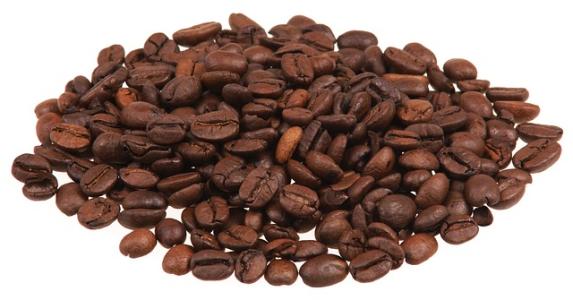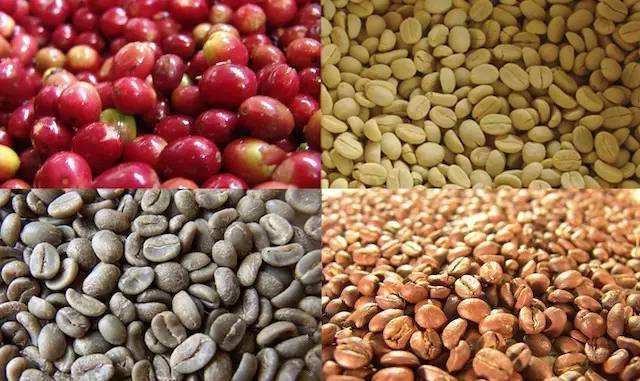Costa Rican coffee taste, how to drink Costa Rican coffee
Costa Rican coffee tastes good
Costa Rican coffee has plump granules, acidity ambition and strangely sticky flavor.
Follow the caf é (Wechat official account vdailycom) and found that Beautiful Cafe opened a small shop of its own.
Institutodel coffee household production, originally controlled by Costa Rica Cafe de CostaRica (ICAFE), has been experienced by the official Coffee Committee (Oficinadel Caf é). In the coffee for export, the products that are thought to be of unqualified quality are colored with blue vegetable dyes and then sold back at home. Coffee (dyed blue or not dyed) accounts for about 10% of the total output in China, and the per capita coffee consumption in the mainland is twice that of Italy or the United States.
This coffee accounts for 1/3 of the world's coffee production, various grades and kinds of coffee, and occupies a place in the global coffee market, although the natural disaster faced by Costa Rica is several times higher than that in other regions. but its cultivated area is enough to supplement.

There are many kinds of coffee here, but its household policy is large and cheap, so there is not much premium coffee, but it is a good choice to mix up the rest of the coffee.
One of the most famous is Mountain Costa Rica Coffee, which tastes mellow and neutral. It can be boiled directly or mixed with other kinds of coffee beans into mixed coffee. It is also a good choice.
Other kinds of Brazilian coffee, such as Rio and Parana, can be produced in large quantities because they do not need too much care. Although the taste is clumsy, it is a kind of high-quality and inexpensive coffee, because it spreads all over the world, varies in character, and has its own scale (NO.2~NO.8 according to the number of sundries, NO.13~NO.19 according to the size of beans, and six grades according to taste). Almost all Arabica species have excellent character and constant value, the most famous being "Costa Rica", which has been a must for mixed coffee since ancient times and has been recognized by the public.
Excellent Costa Rican coffee is called "extra hard beans". This kind of coffee can be developed at an altitude of more than 1500 meters. Altitude has always been a problem for coffee growers. The higher the altitude, the better the coffee beans, not only because the higher altitude can increase the acidity of the coffee beans and thus enhance the flavor, but also because the lower night temperature at the higher altitude can slow the development of the trees, thus the flavor of the coffee beans is stronger. In addition, because the drop at high altitude causes rich rainfall, it is extremely beneficial to the development of coffee trees. However, its negative effect is that it increases the cost of special transportation, which may well make coffee production unprofitable. Costa Rica's coffee industry has recycled new skills to increase compliance, including using "electric eyes" to select beans and identify offending beans of size.
How do you drink Costa Rican coffee?
First of all, no matter what flavor of coffee you brew, don't rush to open your mouth. Sit at the table and gently stir the coffee in the cup. Let its rich essential fragrance fill your sense of smell, and the feeling at this time is absolutely natural and pure. Drink a sip of water to restore the taste to the original. Take a sip, close your eyes and inhale your nose. The richness from the heart is by no means ordinary.
Second。 Put in candy bars, not too much. The aim is to improve its bitterness, and if you put too much it will change its original taste. Take a sip and tell the difference between contrast and pure taste. Take a second sip. I have a different feeling every time. Of course, it should be combined with the environment around you. The mood from the listener saxophone is distant.
Third。 Drink water, return to the original taste, and then taste different feelings at different levels.
Fourth. According to personal preference, you can add appropriate sweet-scented osmanthus nectar, full-bodied, mellow and bitter with fragrance and sweetness.
Important Notice :
前街咖啡 FrontStreet Coffee has moved to new addredd:
FrontStreet Coffee Address: 315,Donghua East Road,GuangZhou
Tel:020 38364473
- Prev

Costa Rican coffee flavor, characteristics of Costa Rican coffee beans
Following Cafe Review (Wechat official account vdailycom) found that the coffee flavor of Costa Rica is always steady, without the sharpness of Guatemala, it is quite mild and supple, and the sour, sweet and bitter chocolate aromas are well balanced, making it the classic flavor of gourmet coffee. The seven major coffee producing areas are as follows: Turialva Valley, Central
- Next

The reasons for the sharp decline in coffee production in Costa Rica
Kaibei (official Wechat account vdailycom) found that coffee exports from Costa Rica accounted for 25% of Costa Rica's total coffee exports. Costa Rica has also benefited from the establishment of the Central American Institute for Agricultural Research (TurrialbaoftheCentralAmericanAgriculturalResearchlnstitute, IAAC) in Tarasu, which is an important
Related
- Detailed explanation of Jadeite planting Land in Panamanian Jadeite Manor introduction to the grading system of Jadeite competitive bidding, Red bid, Green bid and Rose Summer
- Story of Coffee planting in Brenka region of Costa Rica Stonehenge Manor anaerobic heavy honey treatment of flavor mouth
- What's on the barrel of Blue Mountain Coffee beans?
- Can American coffee also pull flowers? How to use hot American style to pull out a good-looking pattern?
- Can you make a cold extract with coffee beans? What is the right proportion for cold-extracted coffee formula?
- Indonesian PWN Gold Mandrine Coffee Origin Features Flavor How to Chong? Mandolin coffee is American.
- A brief introduction to the flavor characteristics of Brazilian yellow bourbon coffee beans
- What is the effect of different water quality on the flavor of cold-extracted coffee? What kind of water is best for brewing coffee?
- Why do you think of Rose Summer whenever you mention Panamanian coffee?
- Introduction to the characteristics of authentic blue mountain coffee bean producing areas? What is the CIB Coffee Authority in Jamaica?

